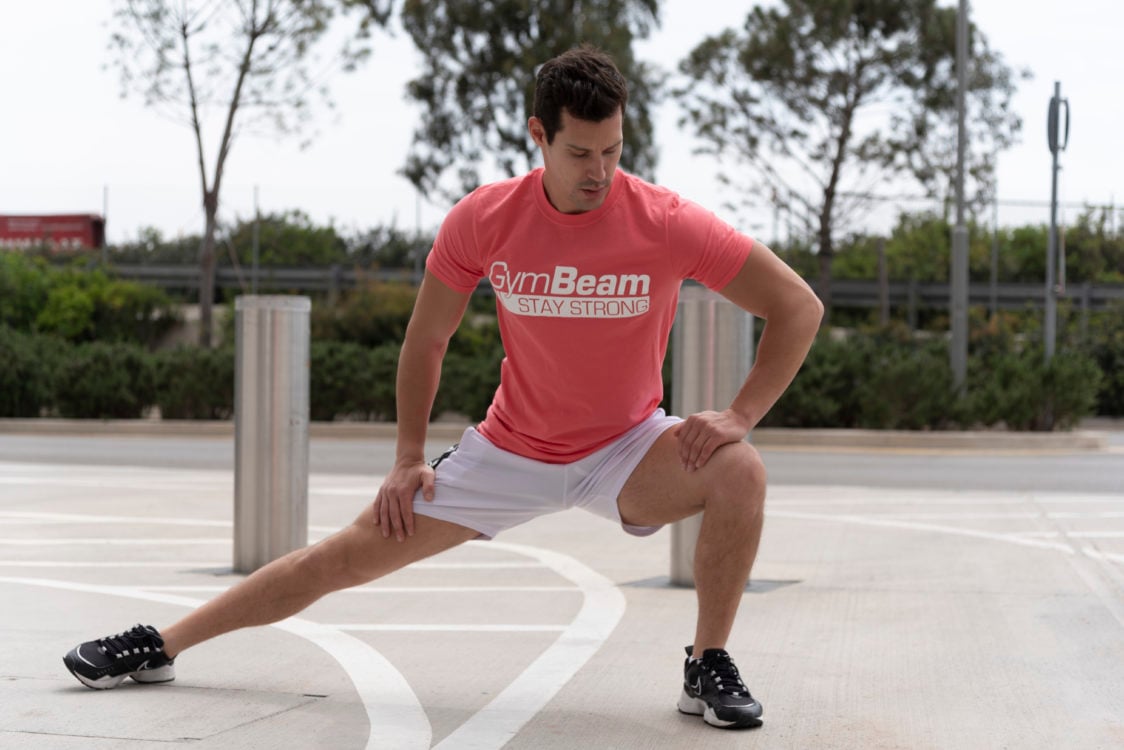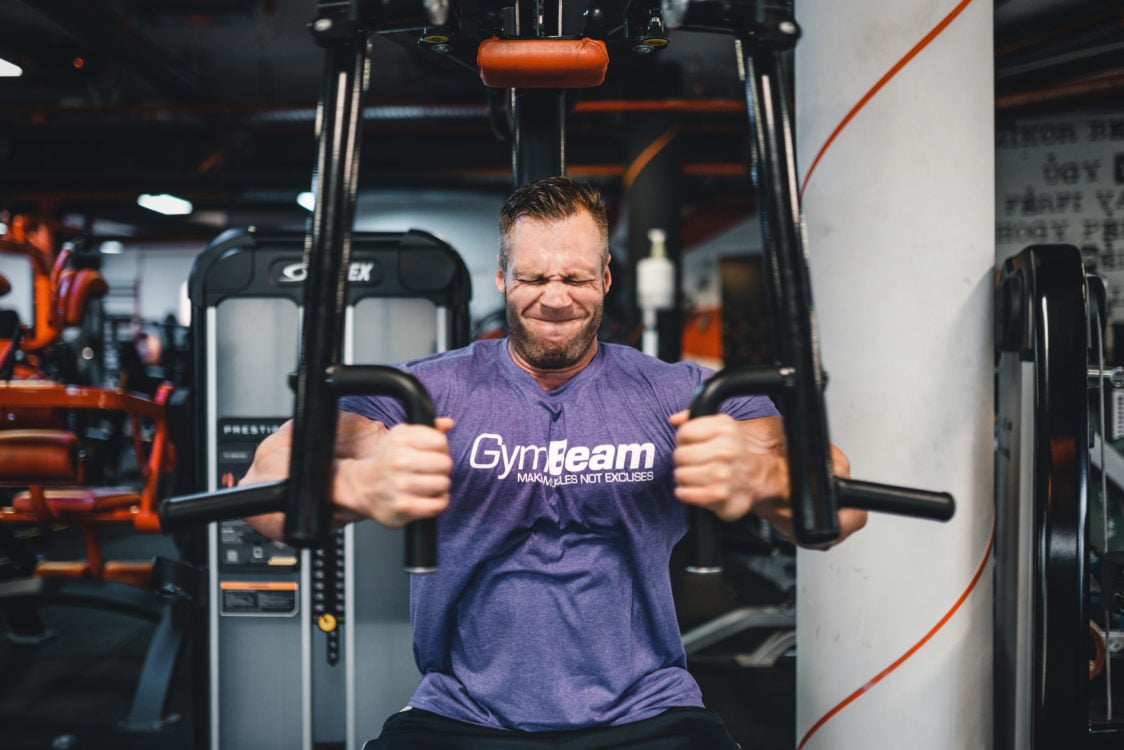Table of Contents
After a long time, you go out with your friends to play basketball, and you prefer not to waste your time with a warm-up because it’s useless anyway, and you get right into the game. The great motivation and desire to show others who is the best on the field dictates the tempo of the game from the start. All of a sudden, you grab the ball, dribble, run everyone out and get ready to jump shot and do a dunk Michael Jordan-style, but when you jump you feel a sharp pain in your calf.
Instead of rebounding another two points, you hit the ground clutching at a sore muscle. You wonder if it’s just pulled, or could it be torn. How to proceed in such a situation? In this article, you will learn what to do with a muscle injury to get back into the game quickly, how to recognize if the muscle is just strained or even torn and whether it is appropriate to use a cold compress for the injury.
How does muscle damage occur?
Unfortunately, professional and recreational athletes often encounter various types of injuries. You may have already experienced an unpleasant stretch or even a painful muscle tear. Such an injury can occur in a fraction of a second and does not only happen during sport. It arises during eccentric contraction, when the muscle is excessively lengthened. We use it all the time in everyday life, like when we put something down. Or you also use this muscle in a bicep curl as you go down. When a muscle is exposed to excessive tension or force during contraction, its fibres may be damaged. [1]
This occurs on the basis of:
- Acute loads – Quick unexpected movement e.g. when sprinting, playing basketball or football, or catching a bus.
- Chronic loads – The muscle overloads in the long term, e.g. by performing the same movement over and over, typically while playing tennis or golf. [2]

Is the muscle strained or torn? How can you tell?
Muscle injuries are divided into three groups according to their severity. Your doctor will give you an accurate diagnosis based on a complete examination, but you can judge for yourself how serious the damage is from some of the symptoms.
1. Mild damage – strained muscle
Do you feel sudden pain and tension in the muscle? At the same time, you do not notice any swelling, loss of strength and mobility in the limb? So you probably just have a strained muscle that’s going to cause slight damage to your muscle fibres. This is nothing serious, but if you continue with any sporting activity, you could significantly aggravate your injury. [3–5]
Once strained, you may still feel a sense of pull, pressure and higher tension in the muscle for several days. This should disappear in about 5 – 7 days without treatment. This is of course is very individual and the return to a full sports load depends mainly on the extent of the muscle damage, with which the treatment period can be extended to several weeks (typically around 1-3 weeks). It is only after the symptoms have resolved that you should be careful to start when getting the muscle working again. [3-5]
2. Moderate damage – partially torn muscle
Do you see bruising, slight swelling and intense pain at the site of the injury? More experienced athletes, who suffer muscle injuries quite often, report that they feel a sharp stab at the site of the injury when they tear a muscle, and they can fairly reliably tell what has happened to them. Other symptoms of a torn muscle include decreased muscle strength. [3-5]
A sharp stabbing in the muscle is likely caused by several broken muscle fibres and a partially torn muscle. At that moment, it is not advisable to continue straining the muscle. Such an injury is treated for about 2 – 3 weeks, sometimes significantly longer depending on the extent of the damage. In most cases, after a month, it is possible to slowly begin with a gradual muscle load. [3–5]

3. Severe damage – partially to completely torn muscle
At that critical moment, you may have heard and felt the rupture of the muscle fibres themselves. Do you feel severe pain, stiffness and impossibility of movement in your muscle? At the site of the injury, do you notice significant swelling and bruising? If you touch the injured muscle, you feel unusual bumps, and it is strangely contracted. [3–5]
It is possible that you have torn it, or even torn in its entirety. At the time of injury, immediately stop straining the muscle and seek medical advice as soon as possible. Healing typically lasts 4 – 6 weeks and rehabilitation lasts 3 – 6 months, while pain at the muscle site may persist for longer. Again, the specified time ranges are indicative, with complete rupture of the muscle, treatment may require more time. [3–5]
You might be interested in these products:
First aid or what you should do immediately for an injured muscle?
In the event of any muscle injury, immediately reduce the activity you are exerting. This will prevent further injury or worsening of what you already have. For first aid procedures, it depends on the severity of the injury.
Typically, in the case of acute musculoskeletal injury, it is recommended to:
- rest – do not burden the injured limb anymore,
- apply an elastic bandage to the injured muscle,
- lift the injured limb to a higher position (above the level of the heart) – e.g. lie on your back and rest your leg against the wall,
- depending on the severity of the injury, it is recommended to ice the affected area. [6]
If you have signs of muscle tearing, such as bruising at the site of injury, swelling and unnatural muscle contraction, we recommend that you see a doctor as soon as possible. They will examine you comprehensively and suggest an appropriate course of treatment. In some cases of complete muscle ruptures (tearing), immediate surgery is required, which may prevent permanent muscle damage.

Should I ice the limb or not?
When a sports injury occurs, it is common to cool the injury site immediately with ice or anything found in the freezer or refrigerator. This procedure is deeply rooted in most people, and probably few doubt its suitability. After placing the frozen vegetables on the affected area, you may feel pain relief for a while. But it’s not guaranteed to help you speed up regeneration. [7-8]
In this respect, opinions vary and according to some experts on muscle injury in sport, icing can negatively affect the body’s natural regeneration processes. Deciding whether or not to ice the injured muscle depends more on whether it’s good for you and if it has helped previously. However, in more severe cases, when the pain is really intense, ice can help you overcome any unpleasant sensations. [7-8]
Ice, cooling pads or cold water are commonly used to cool a sports injury. According to some research, intermittent cooling has positive effects, especially in the first forty – eight hours after the injury occurs. This involves contracting blood vessels at the site of the injury, reduction of swelling, pain and inflammation. Ice should not be applied directly to the skin, but wrapped in a towel. Apply cold compresses only to areas where the skin is intact. [9]

Should inflammation in the body be suppressed when injured?
In the past, it was believed that inflammation that arises from injury is an enemy against which all available weapons (ice, anti-inflammatory drugs) must be used. But new evidence shows that even though inflammation is uncomfortable for a while (swelling, pain), it will ultimately help you. It is important for starting the healing process. Of course, in some cases where inflammation in the body lasts longer than it should and the pain is excruciating, medication or icing can be used. [10-11]
After injury, the limb should be conserved as much as possible. Or not?
In the first few days after the injury, try not to burden the injured muscle too much. When you will be able to exert it more varies depending on the severity of the injury and your doctor’s recommendations. According to current knowledge, in most cases it is possible to start rehabilitation as early as the third day after an injury or surgery. But this will always depend on the level of damage.
In fact, timely and optimal load after an injury can help in the overall treatment of the injury and speed up the return of normal muscle function. Your doctor will typically recommend specific exercises. Ideally, find a physiotherapist to help you with your rehabilitation plan and return from injury. [12]
Advantages of timely and appropriate warm-up of the injured muscle:
- increased blood and lymph flow that promote healing processes,
- the pressure exerted stimulates the regeneration of muscle tissue,
- the natural ability to coordinate movement is preserved,
- the range of movement is maintained in the joints of the injured hand or leg,
- faster recovery and return to normal activities. [13]

What are the risk factors for muscle injury?
Age, physical condition, muscle strength, various imbalances, as well as injury history can all contribute to injury. Athletes who have had musculoskeletal injuries in the past have a higher risk of this happening again in the future. For example, you can see this in professional athletes who have spent their entire careers being treated for a similar type of injury. [14-15]
The muscle can regenerate itself, but the newly formed tissue is not identical to the original tissue. Minor tears require treatment for approximately one to two weeks, the larger ones need several months to heal. When the muscle is healing, connective scar tissue forms, which has less elasticity and contraction, and this can manifest itself in the form of repeated injuries in the future. Frequent and untreated tears in muscle fibres turn into scar tissue, which negatively affects muscle function. [16–18]
In which sports are muscle injuries more common?
- Contact team sports such as football, hockey or rugby.
- Sports that often involve jumping, such as basketball or volleyball.
- Gymnastics, tennis and golf – they are demanding on joint mobility.
- Athletics – especially speed disciplines and jumps.
- Running, cycling, triathlon and other endurance sports – risk of overtraining and fatigue injuries. [19]

These four scenarios most often lead to muscle injury. How to prevent this?
During sporting activities, injury prevention is important. The training plan should be adapted to your physical condition and current state of health. When you feel excessive fatigue and exhaustion, you better choose to rest and skip training. Especially on warm summer days, do not forget about drinking fluids, since hydration is important for the proper functioning of the whole body, including muscles. Also, pay attention to sufficient energy and nutrient intake from your diet to promote muscle regeneration and overall performance. [20]
You can read about how to learn to eat healthily and what your diet should contain in our article What Is a Healthy Diet and How To Learn To Eat Healthily?

1. Before training, you skip stretching and warming up
There’s no time to warm up, so you’re charging straight for the heavyweights or chasing the ball and aiming for the first goal. Inadequate warm up is a common cause of injury. Spend a few minutes running lightly, jumping rope, running ABC drills and undertaking sufficient joint mobilisation. Just get the body moving, and let it know that you’re going to want it to perform more intensely in the next few minutes. [21]
You can read more about the importance of a warm-up before training in our article Exercise, Stretching, Warming Up and Cooling Down – Are They Really Important?
2. You have a small range of movement in the joints
Maybe you’re not stretching enough, and overall your flexibility is decreasing. But then, with any violent movement that your body isn’t used to, you can inflict upon yourself a painful muscle injury. You don’t have to spend an hour of stretching every day, just try to exercise in the full range of motion. This means working out in a gym with weights in extreme positions, just to where the range of the joints and stretching of the muscle will let you go.
However, always pay attention to the technically correct execution of the exercise. This will improve your flexibility and make your body more ready for unexpected movements. Multi-joint exercises are ideal. These include squats, dead lifts, pull-ups, bench presses or lunges. [22]
If you are interested in the correct squatting technique, you can find out more about it by reading our article Squats – Good Technique, Benefits and Variations.

3. Exercising with an excessive load
Do you desire huge muscles and hulk-level strength, and with every training session, you don’t worry so much about technique and train to the maximum? That could backfire. You are at risk of a muscle injury, which will make it impossible to return to normal training for possibly several weeks.
You’d better increase the load gradually and think about the fact that you should have control of the dumbbell, not it over you. Ensure you undertake the correct technique of the exercise, take advice from an experienced trainer who will help you with the technique and well – designed strength development plan. [23]
4. You are overtraining for an extended period of time
If you want to improve, don’t forget to get enough regeneration and rest. This is the only way you will manage the increasing workload required to improve performance. Overtraining can lead to a number of physical and mental problems. It is also a common cause of sports injuries. If you feel long-term fatigue, have mood swings, and routine workouts or other activities are much more demanding than before, you probably need to reverse and get a good night’s rest. [24-25]
If you’ve been feeling tired for a long time and don’t know why, reading our article Why Are You Tired All the Time? The Seven Most Common Causes and Solutions may help you find the answers to unexplained fatigue.

What should you remember?
When moving fast, jumping or lifting something heavy, a muscle may be strained or torn. At that point, it’s important to stay calm and stop exercising or running. In the event of a partial or total tear of the muscle, it is recommended to seek medical advice. Early rehabilitation plays an important role in treatment, preferably under the supervision of a physiotherapist. Treatment may last several months and there is an increased risk of re-injury when you return to sporting activity.
Some sports, such as football or basketball, you are more at risk for injury than others. However, all athletes should take care of safety and injury prevention. It is important not to miss a warm-up before training, to appropriately dose the training load, and also to rest sufficiently.
Have you ever had a strained or torn muscle? Share your experience with treatment of this in the comments. If you liked the article, be sure to share it with your friends, who will surely appreciate this useful information.
[1] Robi, K., Jakob, N., Matevz, K., & Matjaz, V. The Physiology of Sports Injuries and Repair Processes.– https://doi.org/10.5772/54234
[2] Physiopedia. Muscle Injuries. – https://www.physio-pedia.com/Muscle_Injuries
[3] Bupa UK. Muscle Strain: Symptoms, Causes and Treatment.
[4] Fernandes, T. L., Pedrinelli, A., & Hernandez, A. J. MUSCLE INJURY .– https://doi.org/10.1016/S2255-4971(15)30190-7
[5] Järvinen, T. A., Järvinen, M., & Kalimo, H. Regeneration of injured skeletal muscle after the injury. – https://www.ncbi.nlm.nih.gov/pmc/articles/PMC3940509/
[6] Muscle Strain: What You Need to Know About Pulled Muscles. – https://www.hss.edu/conditions_muscle-strain.asp
[7] Bodylogics. Should we ice injuries or is it past its sell by date? – https://www.bodylogics.co.uk/should-we-ice-injuries-or-is-it-past-its-sell-by-date/
[8] Academy, U. S. S. The R.I.C.E Protocol is a MYTH: A Review and Recommendations. The Sport Journal. – https://thesportjournal.org/article/the-r-i-c-e-protocol-is-a-myth-a-review-and-recommendations/
[9] The IOC Manual of Sports Injuries: An Illustrated Guide to the Management of Injuries in Physical Activity– https://www.wiley.com/en-as/The+IOC+Manual+of+Sports+Injuries%3A+An+Illustrated+Guide+to+the+Management+of+Injuries+in+Physical+Activity-p-9781118467978
[10] Dubois, B., & Esculier, J.-F. Soft-tissue injuries simply need PEACE and LOVE. – https://doi.org/10.1136/bjsports-2019-101253
[11] ScienceDaily. Icing muscle injuries may delay recovery.– https://www.sciencedaily.com/releases/2021/05/210518114214.htm
[12] Schils, S., Turner, T., & Acvs, D. Review of Early Mobilization of Muscle, Tendon, and Ligament After Injury in Equine Rehabilitation. – https://www.researchgate.net/publication/277329816_Review_of_Early_Mobilization_of_Muscle_Tendon_and_Ligament_After_Injury_in_Equine_Rehabilitation
[13] Järvinen, T., Kääriäinen, M., Järvinen, M., & Kalimo, H. . Muscle strain injuries. – https://doi.org/10.1097/00002281-200003000-00010
[14] Green, B., Bourne, M. N., Dyk, N. van, & Pizzari, T. . Recalibrating the risk of hamstring strain injury (HSI): A 2020 systematic review and meta-analysis of risk factors for index and recurrent hamstring strain injury in sport. – https://doi.org/10.1136/bjsports-2019-100983
[15] Orchard, J. W., Jomaa, M. C., Orchard, J. J., Rae, K., Hoffman, D. T., Reddin, T., & Driscoll, T. Fifteen-week window for recurrent muscle strains in football: A prospective cohort of 3600 muscle strains over 23 years in professional Australian rules football. – https://doi.org/10.1136/bjsports-2019-100755
[16] Gardner, T., Kenter, K., & Li, Y. . Fibrosis following Acute Skeletal Muscle Injury: Mitigation and Reversal Potential in the Clinic. – https://doi.org/10.1155/2020/7059057
[17] Natažení, natržení, přetržení svalu. – https://www.fyzioklinika.cz/CLANKY-O-ZDRAVI/NATAZENI-NATRZENI-PRETRZENI-SVALU
[18] Dessem, D., & Lovering, R. M. Repeated Muscle Injury as a Presumptive Trigger for Chronic Masticatory Muscle Pain. – https://doi.org/10.1155/2011/647967
[19] Sprains and Strains: Difference, Symptoms, Treatment, Causes, First Aid, Prevention. EMedicineHealth. – https://www.emedicinehealth.com/sprains_and_strains/article_em.htm
[20] University of Rochester Medical Center.Preventing Sports Injuries.– https://www.urmc.rochester.edu/encyclopedia/content.aspx?contenttypeid=85&contentid=P00935
[21] Southeast Orthopedic Specialists.Do Warm-ups Prevent Sports Injuries? https://se-ortho.com/warm-ups-prevent-sports-injuries/
[22] Afonso, J., Ramirez-Campillo, R., Moscão, J., Rocha, T., Zacca, R., Martins, A., Milheiro, A. A., Ferreira, J., Sarmento, H., & Clemente, F. M. Strength Training versus Stretching for Improving Range of Motion: A Systematic Review and Meta-Analysis.– https://doi.org/10.3390/healthcare9040427
[23] Coach.Why Lifting Heavier Weights Isn’t Always Better. – https://www.coachmag.co.uk/go/7551
[24] Overtraining Syndrome. – https://www.ncbi.nlm.nih.gov/pmc/articles/PMC3435910/
[25] All About Overtraining. – https://www.trainingpeaks.com/blog/all-about-overtraining/


Add a comment